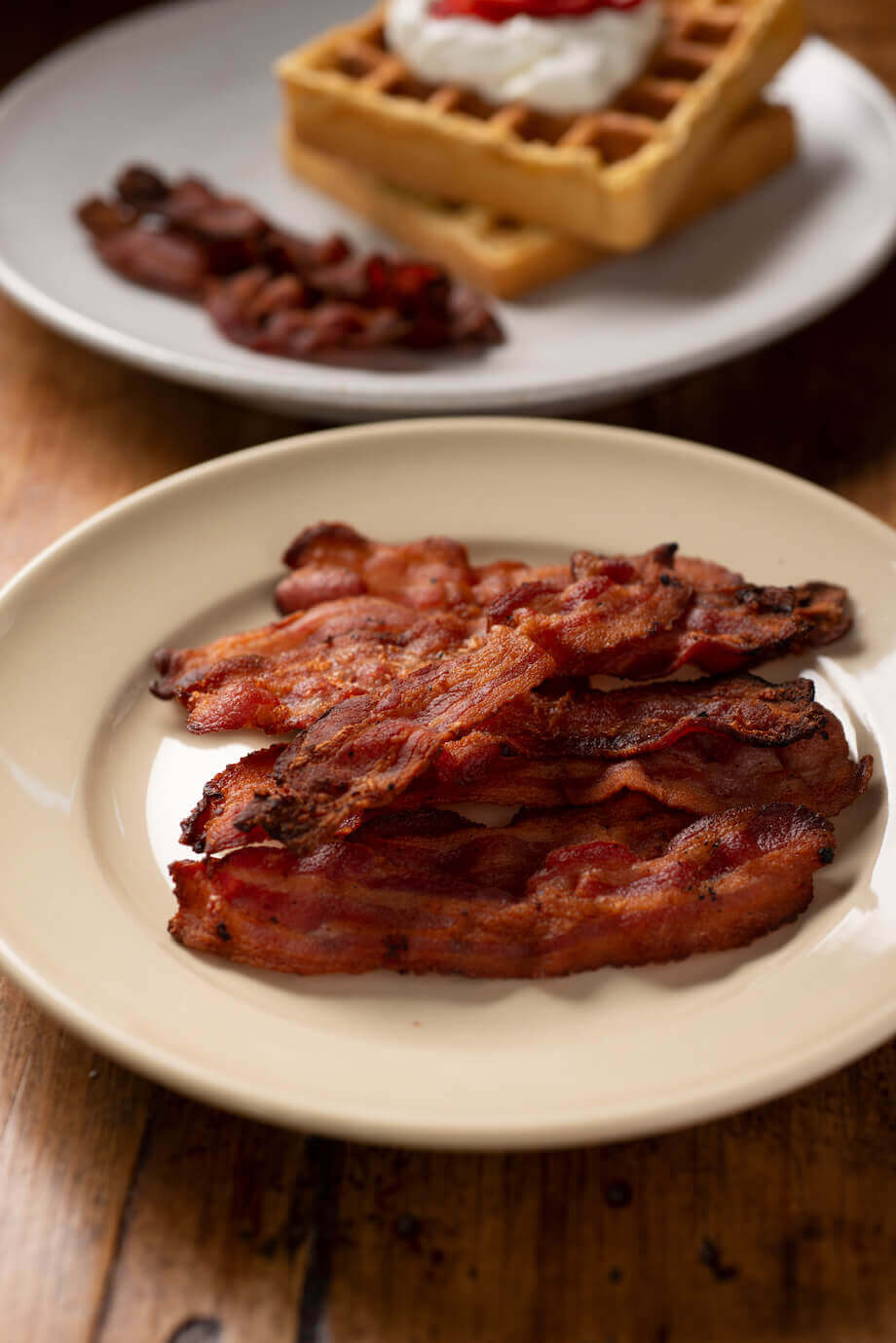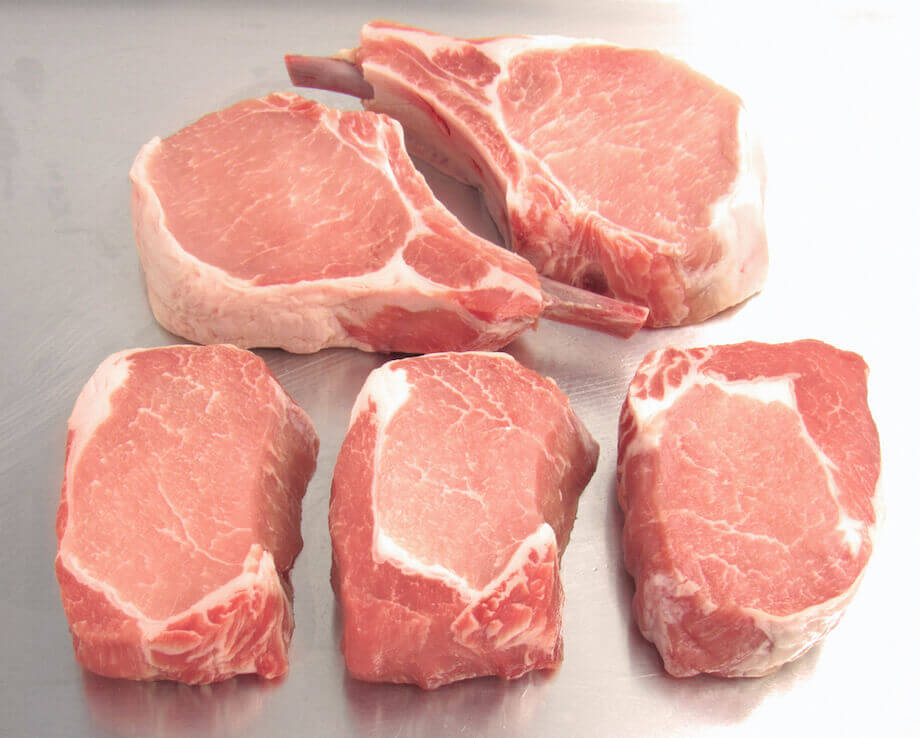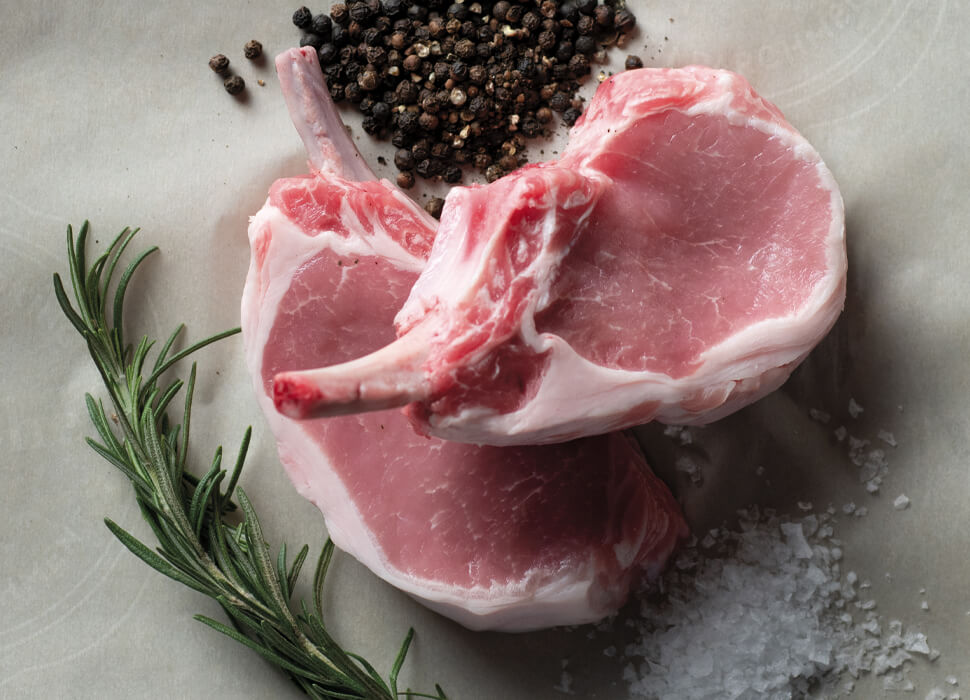Would it shock you that pork makes up a staggering 36% of meat consumed worldwide? It’s a fact! For a moment, consider your favorite pork cuts like bacon, and you might already be salivating its irresistible savory flavor.
On top of the standout flavor factor, pork can seamlessly complement an array of side dishes or party appetizers you might prepare. Most importantly, pork’s versatility can offer endless meal options that your family craves. And opting for all-natural pork that has no antibiotics ever and no added hormones or artificial ingredients can ensure peace of mind at the dinner table!
Exploring the Top Benefits of Pork: Versatility, Flavor, and Beyond
Whether you’re a professional chef or home cook focused on weekly meal prep, pork can quickly become the “hero” protein in the kitchen. Let’s dive into the top benefits of cooking with pork!
Pork is Versatile: Multiple Cut Exists
Did you know that there are four primal cuts of pork? This includes the leg, loin, shoulder, and side! Each of these major cuts is then broken down into sub-primal cuts; hence the reason why there are multiple cuts to select from, such as the following:
Bacon
It’s crispy, salty, and addicting, meaning you can’t just stop at one piece. It’s bacon—one of the most beloved pork cuts in the U.S. The average American devours about 18 pounds of bacon each year, making it the star player in the suite of pork options. Plus, you can purchase it based on personal preference, whether you like slab, thin, or thick cuts!

Bacon also stretches far beyond the traditional omelet accompaniment at Sunday brunch. You can mix it into sweet baked goods like a Maple Bacon Coffee Cake or something on the opposite end of the spectrum, like Savory Bacon and Cheddar Cheese Scones.
Ham
Whether you choose ham steak, spiral ham, or any other variation, ham is one of the heartiest pork cuts that can easily jazz up stews, soups, sandwiches, salads, and more! For instance, you can use leftovers to assemble an Autumn Apple, Ham, and Goat Cheese Salad or easily fold into savory Ribollita Soup.
Pork Chops
If you have a table swarming with hungry humans, one of the quickest and easiest cuts to prepare and serve would have to be pork chops. For instance, in under 30 minutes, you can prepare Hot Honey Pork Chops or Italian-Style Air Fryer Pork Chops! Plus, you can pair pork chops with just about any side, like fresh veggies, mashed potatoes, pasta salad, and more!
Pork Roast
Pork roast is unique for its ability to deliver tender and flavorful meat, often with a delightful balance of succulence and crispiness in the crackling skin—an exceptional main course at any holiday table! One of the most mouthwatering dishes you can craft with pork roast is a classic Slow Cooker Pork Roast with Rosemary and Sauerkraut.
Pork Ribs
A mouthwatering barbeque spread isn’t the same without pork ribs—especially when the meat slowly drips off the bone and simmers in a bath of tangy, sweet sauce. Although pork ribs get a reputation for taking endless hours to cook up, that’s not the case! For example, you can toss them into your air fryer and serve them in 35 minutes!
Ground Pork
Ground pork certainly stands out for its rich flavor that delivers subtly sweet notes. If you’re tired of using ground beef, chicken, or turkey for that slow-cooked red pasta sauce, you can easily swap in ground pork to add a whole new dimension of flavor. This is evident in our coveted ground pork recipes, such as Thai Noodles with Ground Pork and Stuffed Cabbage Rolls with Ground Pork and Ginger.
Pork Loin Filet
Pork loin is a special pork cut since it’s exceptionally lean! Needless to say, it makes a versatile (and nutritious) canvas for a wide range of culinary creations, such as Bacon Wrapped Honey Roast Pork Loin or Asian Spiced Pork Tenderloin with Apricot Sauce.
Pork Yields a Dynamic, Complementary Flavor Profile
With so many pork cuts available, the natural flavor can vary slightly! But almost all pork naturally yields a well-balanced profile, with a salty yet sweet essence.
Now, with that said, other factors may affect the flavor profile, such as the livestock’s diet. For instance, at Coleman Natural, all animals adhere to a strict vegetarian diet, without any animal by-products.
Last but not least, since pork intrinsically garners a subtle flavor profile that’s not too overpowering, it can quickly transform into several different culinary delights that span a variety of cuisines.
American Cuisine — Bacon and Beyond
In American cuisine, traditional pork pairings include pork chops coupled with applesauce, where the sweet, fruity notes of apples complement the savory undertones of the pork, creating a nostalgic combination. Similarly, in Southern barbecue traditions, succulent pulled pork marries perfectly with smoky barbecue sauce, exemplifying the wonderful fusion of flavors that pork offers.
Asian Cuisine — Did Somebody Say, “Stir-fry?”
In Asian cuisine, the possibilities are equally tantalizing. Pork can add a touch of heartiness to a medley of fresh veggies like broccoli and bok choy in stir-fries. The marriage of pork and seasonings such as ginger, garlic, and soy sauce bolsters the natural umami flavor profile that has become a staple in dishes like Chinese sweet and sour pork.
European Cuisine — Classic Pork Creations
Traveling to Europe, we find that classic pork dishes are sprinkled throughout several regions.
For instance, in Germany, pork schnitzel often shares the plate with warm, tangy sauerkraut, creating a delightful balance between the tender, breaded pork and the fermented cabbage. In Belgium, a hearty dish of pork and Brussels sprouts offers a comforting combination. And lastly, if you find yourself in Italy, you’ll certainly come across festival food stands selling “Porchetta” — a savory pork roll filled with delicious herbs and usually served as a panini.
Mexican Cuisine — Uniquely Spicy Pork
In Mexico, “Cochinita Pibil” is a famous pork dish that originated from the Yucatan Peninsula. This vibrant dish features marinated pork cooked in banana leaves, imparting a unique aroma and tenderness. Achiote paste, citrus juices, and spices contribute to its distinctive flavor. Another pork highlight is Tacos al Pastor, which contains marinated pork sliced thinly and stacked on a vertical rotisserie.
Brazilian Cuisine — Pork With a Portuguese Influence
“Feijoada” happens to be Brazil’s national dish! In a nutshell, it’s a hearty stew filled to the brim with black beans and lots of pork cuts such as ribs, sausage, bacon, or pork belly. Slow-cooked with various spices, it’s often served with rice, greens, and farofa (toasted cassava flour).
In Brazil, you might also come across Torresmo, which contains crispy pork cracklings or pork belly pieces deep-fried until golden and crunchy. It’s usually seasoned with garlic, salt, and various spices, making it a go-to snack.
Pork Can Be Cooked A Handful of Ways
Pork can be prepared using a variety of cooking methods, each imparting its unique flavor and texture to the meat.
Grilling is ideal for achieving a smoky, charred exterior with a juicy interior, while roasting and baking offer a more controlled, oven-baked approach for succulent and evenly-cooked pork. Frying, air-frying, and pan-searing create crispy exteriors and are perfect for cuts like chops or schnitzels.
For more of a robust flavor, smoking is the way to go, slowly infusing the meat with a deep, woodsy taste. Lastly, braising, stewing, and simmering are best for tougher cuts, rendering them tender and juicy in a flavorful, simmering liquid.
Pork Can Support a Well-Balanced Diet
Pork can offer a solid source of good protein, packing about 22 grams in a 3-ounce serving. It’s loaded with essential vitamins like B vitamins that can keep your energy up, help your nerves work well, and aid in the creation of red blood cells.

While pork does contain some saturated fat, it also contains healthy fats, like those found in avocados and nuts. Choosing leaner pork cuts and using certain cooking methods like grilling or air frying can help you extract all of the nutritious benefits while keeping a balanced diet.
Relish the Benefits of High-Quality Pork
It doesn’t take long to realize that pork is one of the most versatile, flavorful, and nutritious meat options that can be a valuable addition to any routine! You can quickly prepare it multiple ways and trust you’ll garner a delicious result! Plus, when you choose all-natural pork, you can cook with ease, knowing that it’s coming from a credible source.
The Coleman Way, since 1875, is our commitment to quality, taking pride in humanely raising animals on family farms in the U.S.A. with no antibiotics ever, no growth hormones, and 100% vegetarian fed. The result is premium, great-tasting, all-natural meats in a variety of cuts and flavors that can be easily prepared and that you can feel good about serving to family and friends.
Ready to sink your teeth in more articles? Try these next!


